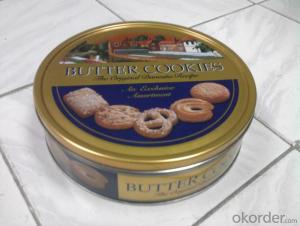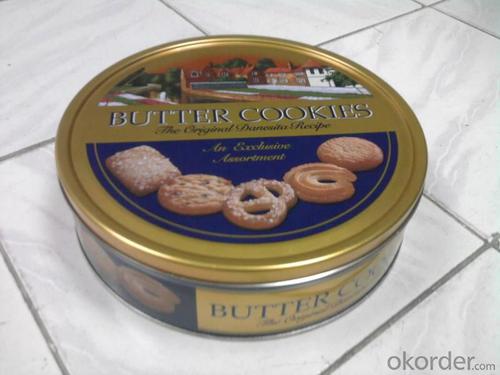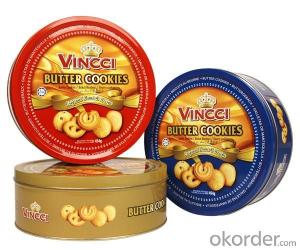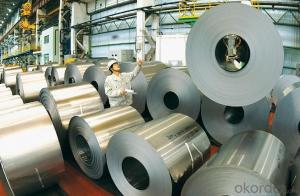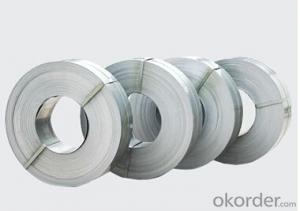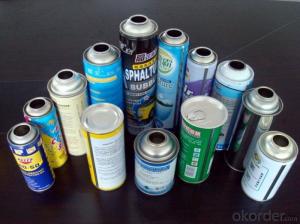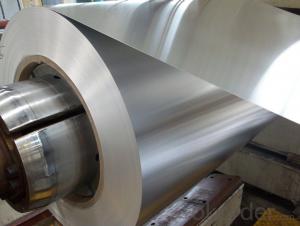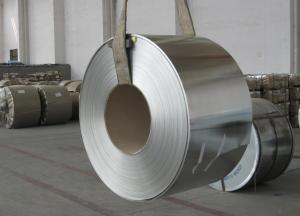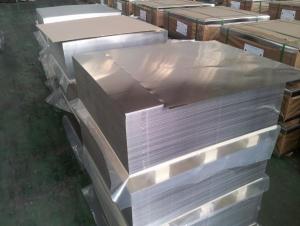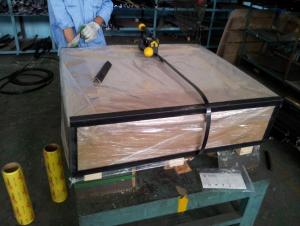Prime Grade Tinplate For Aerosol Cans, Dome & Cone,MR
- Loading Port:
- China main port
- Payment Terms:
- TT OR LC
- Min Order Qty:
- 25 m.t
- Supply Capability:
- 40000 m.t/month
OKorder Service Pledge
OKorder Financial Service
You Might Also Like
Specification
1.Brief Introduction
Tinplate is widely used for making all types of containers, containing industrial usage such as paint can, oil can, aerosol cans etc., and food cans like milk powder cans, tomato paste can, dry food cans etc.
2. Quality
As a state owned company and a large tinplate supplier in China, our tinplate quality ranks 1st level in China, similar to Bao Steel, Posco etc.
3. Our CA Line Production Range
Temper | Thickness(mm) | Width(mm) | Length(mm) |
T3CA | 0.19~0.20 | 800~900 | 520~1068 |
0.21~0.25 | 800~950 | ||
0.26~0.45 | 800~1050 | ||
T4CA | 0.17~0.20 | 800~950 | |
0.20~0.45 | 800~1050 | ||
T5CA | 0.17~0.20 | 800~950 | |
0.20~0.28 | 800~1050 |
4. Our production steps
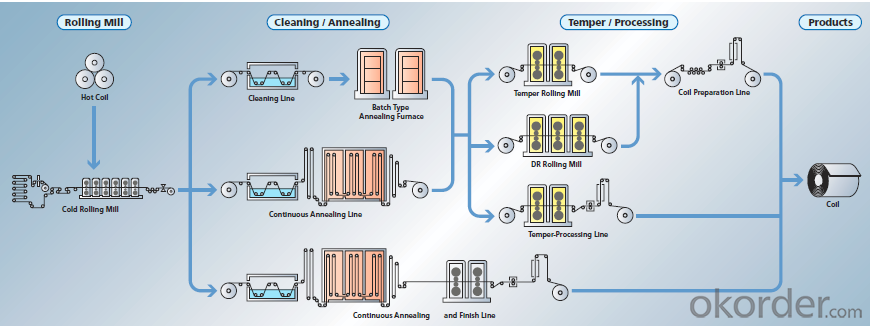
5. Usage Scope
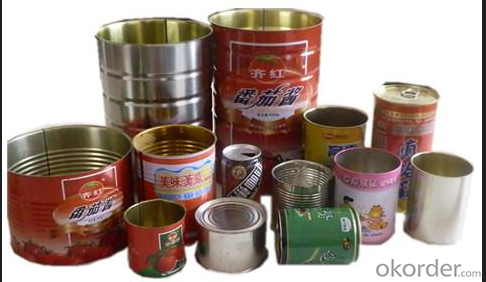
6. Our euxport market
our tinplate has been popularly exported to more than 30 countries, including Asia, Europe countries, Gulf area, Sounth America, Northe & South Afric etc.
7. FAQ
a. what's the annual output?
about 500,000 tons per year.
b. where's the raw matrial from?
our hot rolled coil is purchased from Capital Steel and other state owned mill, with quite good quality.
c. how long is the delivery time?
normally for SPCC about 45~55 days, while 65~75 days for MR material
d. how to control the quality during production process?
inside our workshop, we have MES syestem. It realizes the optimization of the production procedure in the workshop. It could record each step of the whole production procedures, and if some problem appears, factory could easily found and take action, it’s quite helpful to monitor and control the quality.
- Q: How does tinplate affect the recyclability of mixed-material packaging?
- Tinplate plays a significant role in enhancing the recyclability of mixed-material packaging. It is highly recyclable and has a well-established recycling infrastructure worldwide. By incorporating tinplate into mixed-material packaging, it enables easier separation of different materials during the recycling process. Tinplate's recyclability helps reduce waste and conserve resources by enabling the recovery and reuse of valuable materials, ultimately promoting a more sustainable packaging system.
- Q: How is tinplate affected by exposure to chemicals?
- Tinplate is typically resistant to corrosion and can withstand exposure to various chemicals without significant damage or reactions. However, certain aggressive or highly acidic chemicals may cause corrosion or tarnishing on the tin coating, leading to a potential degradation of its protective properties. Therefore, the extent to which tinplate is affected by exposure to chemicals largely depends on the specific nature and concentration of the substances it comes into contact with.
- Q: Can tinplate be recycled?
- Yes, tinplate can be recycled. It is a highly recyclable material that can be melted down and reused to make new tinplate products. Recycling tinplate helps to reduce waste and conserve resources.
- Q: What are the different methods of cutting and shaping tinplate?
- Some of the different methods of cutting and shaping tinplate include shearing, stamping, laser cutting, and forming.
- Q: How does tinplate perform in terms of insulation properties?
- Tinplate is not known for its insulation properties as it is a highly conductive material.
- Q: How does tinplate handle exposure to chemicals and solvents?
- Tinplate is known for its excellent resistance to corrosion caused by chemicals and solvents. It has a protective tin coating that acts as a barrier, preventing direct contact of the metal with the substances. This makes tinplate highly resistant to most chemicals and solvents, ensuring durability and maintaining product integrity.
- Q: What industries use tinplate packaging?
- The industries that commonly use tinplate packaging include food and beverage, cosmetics, pharmaceuticals, and household products.
- Q: How is tinplate coated with food-grade materials?
- Tinplate is coated with food-grade materials through a process called electrolytic tinning. In this process, a thin layer of tin is electroplated onto the surface of the tinplate, creating a protective barrier between the metal and the food. This coating ensures that the tinplate is safe for food contact and prevents any undesirable reactions between the metal and the food.
- Q: How does tinplate packaging contribute to product protection against odors?
- Tinplate packaging contributes to product protection against odors due to its excellent barrier properties. The tin coating on the steel substrate prevents the penetration of external odors, ensuring that the product inside remains fresh and uncontaminated. Additionally, tinplate packaging provides a hermetic seal, preventing the escape of any odors from the product, thus preserving its quality and integrity.
- Q: What are the common labeling options for tinplate containers?
- The common labeling options for tinplate containers include adhesive labels, heat transfer labels, direct printing, and embossing.
Send your message to us
Prime Grade Tinplate For Aerosol Cans, Dome & Cone,MR
- Loading Port:
- China main port
- Payment Terms:
- TT OR LC
- Min Order Qty:
- 25 m.t
- Supply Capability:
- 40000 m.t/month
OKorder Service Pledge
OKorder Financial Service
Similar products
Hot products
Hot Searches
Related keywords
